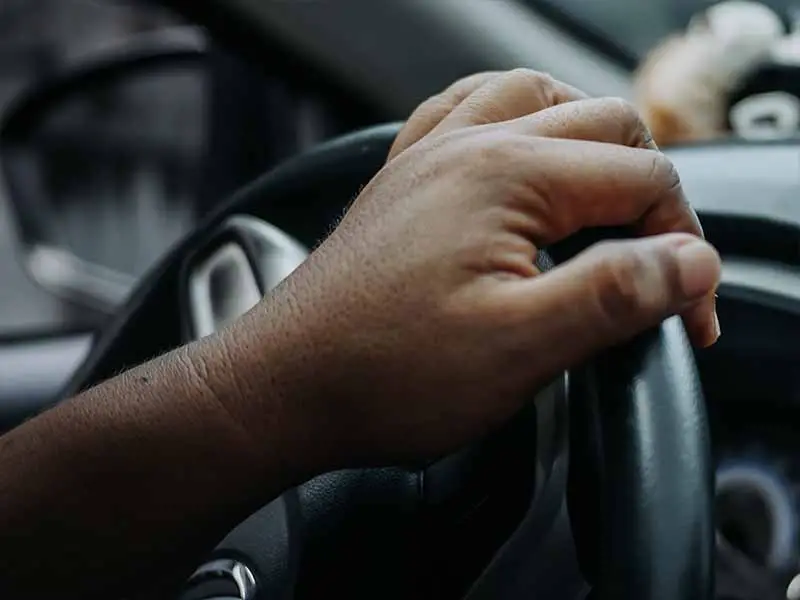Have you ever felt your car pulling to one side or noticed uneven wear on your tires? These might not just be random observations but glaring warnings of a deeper issue. Ignoring them could be compromising your safety and burning a hole in your pocket!
Dangers Of Driving With Bad Alignment
Driving with bad alignment can lead to uneven tire wear, compromised vehicle handling, and increased strain on suspension components. Over time, it can reduce tire lifespan, decrease fuel efficiency, and pose significant safety risks.
In this article, we’ll delve deep into what wheel alignment is, recognize its symptoms, understand the dangers of neglecting it, and learn how it affects more than just your tires.
Let’s take a closer look.
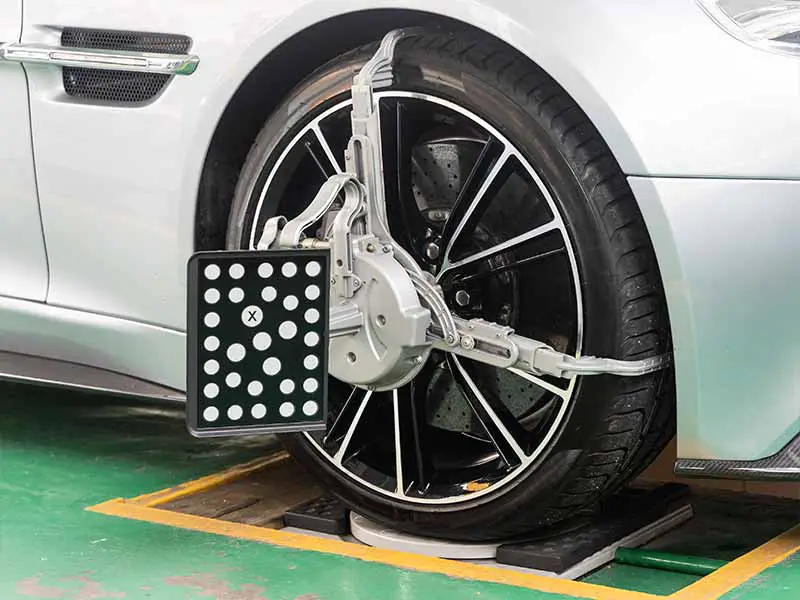
What Is Wheel Alignment?
Wheel alignment, often simply termed as ‘alignment’, is a standard vehicle maintenance procedure that ensures the angles of the wheels are set correctly relative to the vehicle’s body. The main goal is to maximize the lifespan of tires, ensure consistent tire wear, and ensure that the vehicle travels straight without “pulling” to one side.
Purpose of Wheel Alignment
- Safety: Proper alignment reduces strain on the vehicle’s steering system and reduces the risk of sudden tire malfunction.
- Tire Lifespan: Tires wear out evenly when aligned correctly, leading to longer tire lifespan.
- Efficiency: Proper wheel alignment can also enhance fuel efficiency since misaligned wheels create unnecessary resistance and friction.
Proper vs. Improper Wheel Alignment
- Proper Wheel Alignment:
- The vehicle drives smoothly without veering to one side.
- Even tire wear is observed across all tires.
- The steering wheel returns to its original position after making a turn.
- Improper Wheel Alignment (or Misalignment):
- The vehicle tends to drift or pull to one side, even when you’re attempting to drive straight.
- Uneven or rapid tire wear is evident.
- The steering wheel might be crooked while driving straight or might vibrate.
Key Components Involved
Three primary angles are often adjusted during a wheel alignment procedure:
- Camber: This refers to the tilt of the top of the tire either inwards or outwards from the vehicle’s centerline.
- Positive Camber: Top of the tire tilts outward.
- Negative Camber: Top of the tire tilts inward.
- Toe: This concerns whether the fronts of the tires are closer together (toe-in) or further apart (toe-out) than the rears of the tires.
- Caster: This deals with the steering axis, considering if it tilts towards the driver (negative) or towards the front of the vehicle (positive).
For the best driving experience and tire life, all these angles should be set according to the vehicle manufacturer’s specifications.
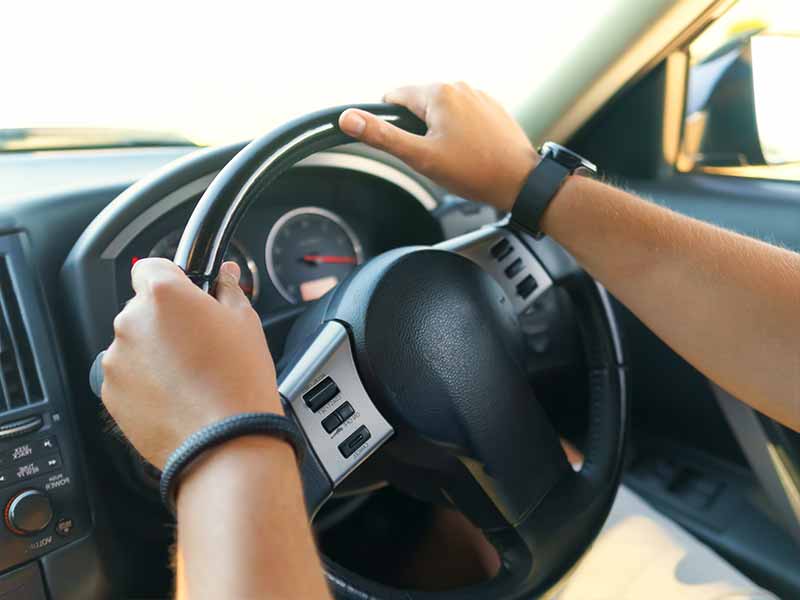
Recognizing the Symptoms of Bad Wheel Alignment
Steering Wheel Issues
Off-Center Steering Wheel
When driving straight, the steering wheel should be near perfectly horizontal with the vehicle emblem centered. If the steering wheel is crooked while you’re driving straight, it’s a strong indication of wheel misalignment.
Vibrating Steering Wheel
A steering wheel that shakes or vibrates, especially at specific speeds, can be a symptom of bad wheel alignment. This vibration results from the tires pulling in opposing directions.
Uneven Tire Wear
What to Look For:
- Feathering: Tires show a smooth tread on one side and sharper, more worn treads on the other.
- Cupping: Dips or scalloping occur in the tread, leading to a bumpy ride.
- Heel/Toe Wear: One side of the tread, often the outside, wears down faster than the other.
Regularly checking for these patterns can help identify alignment issues early, ensuring a longer lifespan for your tires.
Difficulty in Driving in a Straight Line
Vehicle Drift or Pull
Misaligned wheels can cause a vehicle to drift or pull to one side, even when the steering wheel is aimed straight ahead. This pulling sensation makes driving tedious and can be a safety hazard in certain conditions.
Other Recognizable Symptoms
Noise While Driving
Misaligned wheels can sometimes lead to increased road noise. If you hear a humming or growling noise while driving, it’s essential to check both the tires and the wheel alignment.
Vehicle Pulling to One Side
A strong indication of wheel misalignment is when the vehicle consistently pulls to one side. This symptom requires immediate attention as it affects the safety of the driver and passengers.
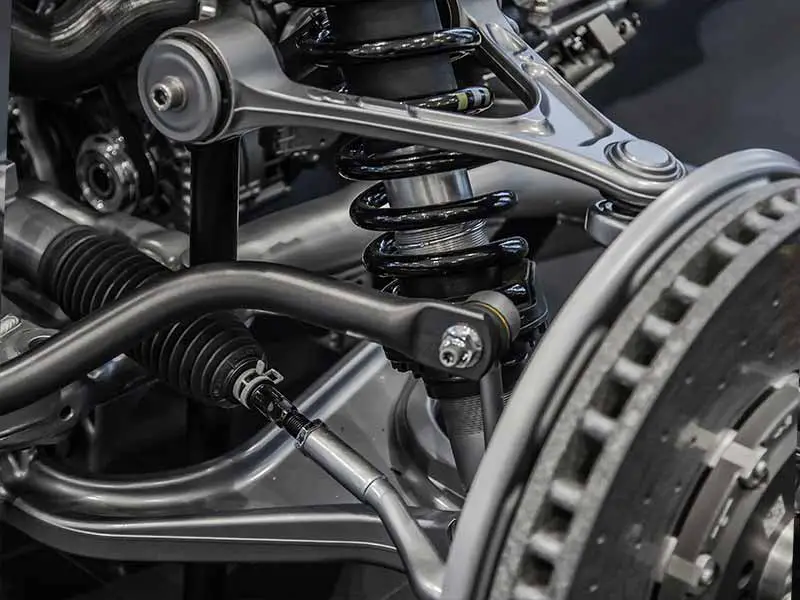
The Dangers of Ignoring Wheel Misalignment
Impact on the Suspension System
Strain on Suspension Components
Misaligned wheels don’t just impact tires; they put additional strain on suspension components as well. This uneven stress can lead to premature wear and potential failure of parts integral to your vehicle’s stability.
Wheel Bearings and Misalignment
Wheel bearings are essential components that help your wheels spin smoothly. Bad alignment, particularly when ignored over extended periods, can lead to uneven pressure on these bearings, potentially causing them to wear out prematurely or even fail.
Tire Wear and Lifespan
Rapid Tire Deterioration
When wheels are misaligned, the uneven pressure exerted on the tires leads to rapid and uneven tire wear. This not only shortens the lifespan of the tires but also increases the chances of sudden tire failures.
Financial Impact
Frequent tire replacements due to bad alignment can become a considerable expense over time. Plus, unevenly worn tires can adversely affect fuel efficiency, leading to increased fuel costs.
Reduced Safety While Driving
Compromised Vehicle Control
Bad wheel alignment can make the vehicle harder to steer, especially during sudden maneuvers. This reduced control can be particularly dangerous in emergency situations or adverse driving conditions.
Risk of Accidents
A vehicle drifting or pulling due to misalignment, combined with decreased tire tread, increases the chances of accidents. Wet or icy roads can further exacerbate these risks.
Underlying Damage
It’s not just the visible symptoms; wheel misalignment can also cause damage to parts of the vehicle that aren’t immediately visible, such as the undercarriage. Over time, this hidden wear and tear can lead to more significant issues and repair costs.

How Long Can You Drive with Bad Alignment?
Understanding the Immediate Risks
Compromised Handling
Even with a slight misalignment, you may begin to notice differences in how your vehicle handles. It may become harder to steer, or the vehicle might drift, reducing your control.
Tire Damage Progression
The longer you drive with misaligned wheels, the more uneven the tire wear becomes. This can lead to a noticeable reduction in the tires’ lifespan.
Long-term Implications
Impact on Vehicle Performance
Continuous driving on bad alignment affects not only tire wear but also the vehicle’s overall performance. Fuel efficiency can decrease due to increased rolling resistance, and the vehicle might start showing decreased acceleration and top speed.
Wear on Other Vehicle Components
Prolonged misalignment doesn’t only wear out your tires. It can also accelerate wear on other vital components, such as the suspension and braking systems, leading to costly repairs down the line.
When Should You Seek Alignment Services?
- After Hitting a Major Pothole or Obstacle: A significant impact can quickly knock your vehicle out of alignment.
- Notable Changes in Handling: If you begin to notice drifting, pulling, or any change in the vehicle’s handling, it’s a clear sign to check the alignment.
- Visible Tire Wear Patterns: Regularly inspect your tires. If you start seeing uneven wear patterns, like feathering or cupping, consider getting an alignment check.
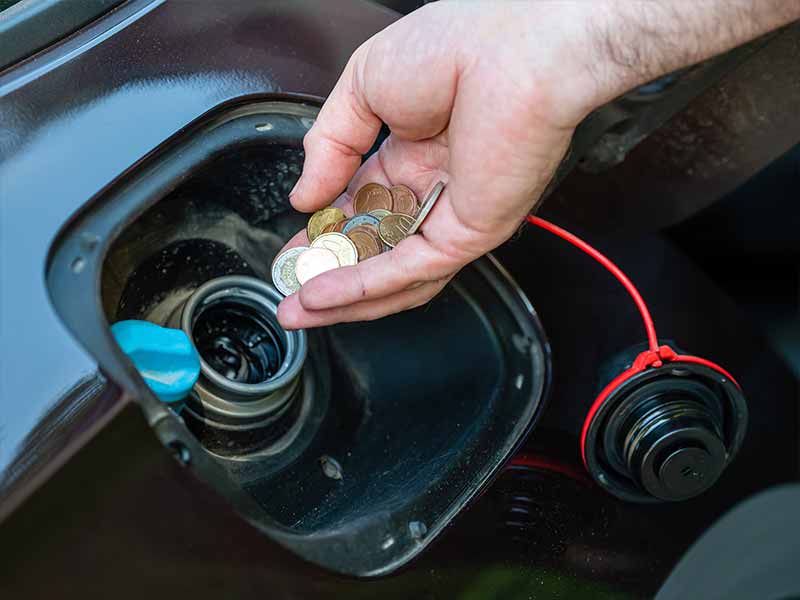
Consequences Beyond the Tires
Impact on Vehicle Systems
Braking System
- Uneven Pressure: Misalignment can lead to uneven pressure distribution during braking. This might result in reduced braking efficiency and longer stopping distances.
- Wear and Tear: With bad wheel alignment, the brake pads and rotors can wear out unevenly due to the unequal force exerted on them.
Suspension System Degradation
Misaligned wheels put undue stress on the vehicle’s suspension components. This can accelerate wear on parts like:
- Bushings
- Shock absorbers
- Struts
Fuel Efficiency Reduction
Bad alignment increases the rolling resistance of the tires. When the tires can’t roll as efficiently:
- The engine has to work harder.
- This leads to increased fuel consumption, thus reducing the vehicle’s miles-per-gallon rating.
Reduced Vehicle Lifespan
- Accelerated Deterioration: Continuously driving with misaligned wheels can cause more rapid deterioration of several vehicle components.
- Potential for Hidden Damage: Beyond visible wear and tear, misalignment can cause damage to parts of the vehicle not immediately observable. This hidden damage, over time, can lead to unexpected breakdowns or necessary repairs.
Decreased Resale Value
- Evidence of Neglect: Potential buyers or dealers can often tell if a vehicle hasn’t been well-maintained. Signs of uneven tire wear, worn-out brake systems, and a degraded suspension system can reduce the vehicle’s resale value.
- Cost of Repairs: Before selling, you might have to bear the cost of repairs or replacements to make the vehicle more appealing to buyers.
Resources
Below are some links you may find helpful when learning about tires
Final Thoughts
Ignoring the signs of misalignment can lead to rapid tire wear, strain on suspension components, decreased fuel efficiency, and reduced overall vehicle lifespan. It’s essential to regularly check for symptoms like pulling to one side, uneven tire wear, or a vibrating steering wheel.
By addressing alignment issues promptly, you safeguard your vehicle’s performance, ensure your safety on the road, and ultimately save on potential repair costs in the long run.
Good luck and happy motoring.
